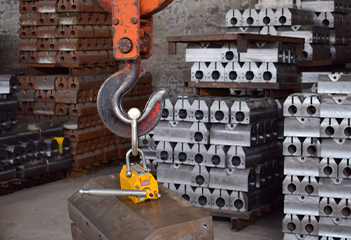Design and Implementation of Safety Structures for Overhead Protection in Construction Areas
Overhead Protection Gantries Enhancing Safety in Construction and Maintenance
In the realm of construction and maintenance, ensuring the safety of workers and the public is paramount. One of the most effective solutions for mitigating risks associated with falling objects is the implementation of overhead protection gantries. These structures serve as both a physical barrier and a safety measure, significantly reducing the potential dangers posed by materials and tools used in elevated work areas.
What is an Overhead Protection Gantry?
An overhead protection gantry is a temporary structure typically erected above a worksite to shield individuals below from falling debris or objects. These gantries can be constructed using various materials, including steel and reinforced aluminum, and are designed to withstand the forces exerted by falling items, as well as environmental conditions such as wind and rain. The ganTRYs can be used in a variety of settings, including construction sites, road maintenance, and even during large-scale events.
Importance of Overhead Protection
The significance of overhead protection gantries cannot be overstated. Statistically, falling objects are a leading cause of injuries and fatalities in the construction industry. According to the Occupational Safety and Health Administration (OSHA), falls accounted for nearly 40% of all construction-related deaths. By implementing overhead protection gantries, construction companies can dramatically reduce these risks, ensuring a safer environment for both workers and pedestrians.
Design Considerations
When designing an overhead protection gantry, several factors must be considered to ensure the structure's effectiveness and stability. Firstly, the height of the gantry should be sufficient to cover the entire work area, providing a comprehensive shield against falling objects. Additionally, the gantry must be anchored securely to prevent it from being displaced by wind or vibrations from nearby machinery.
overhead protection gantry

Load-bearing capacity is another critical aspect. The gantry must be capable of supporting not only its own weight but also the potential weight of any objects that could fall onto it. Regular inspections and maintenance are essential to ensure the gantry remains in optimal condition throughout the project.
Compliance with Regulations
Compliance with local and national safety regulations is crucial when implementing overhead protection gantries. Many jurisdictions have specific guidelines outlining the requirements for temporary structures, including design standards, construction procedures, and safety protocols. Failing to adhere to these regulations can result in project delays, fines, and, most importantly, jeopardized safety.
Benefits Beyond Safety
Beyond enhancing safety, overhead protection gantries offer several other advantages. They can help streamline construction processes by minimizing the likelihood of work stoppages due to safety incidents. The presence of a gantry can also improve public perception of a construction project, as it demonstrates a commitment to safety and responsibility. Furthermore, by protecting pedestrians from construction activities, these structures facilitate a smoother flow of foot and vehicular traffic around work sites.
Conclusion
Overhead protection gantries are an indispensable component of modern construction and maintenance practices. By providing a reliable means of safeguarding against falling objects, they play a critical role in promoting safety and efficiency on job sites. As the construction industry continues to evolve, the importance of innovative safety solutions like overhead protection gantries will only grow. Ensuring that these structures are designed, constructed, and maintained in accordance with established safety standards is essential for protecting workers and the public alike. With a focus on safety, the construction industry can pave the way for safer working environments and reduce the risks associated with elevated work.
-
The Ultimate Guide to Heavy Machinery Moving EquipmentNewsAug.04,2025
-
The Evolution of Large Equipment MoversNewsAug.04,2025
-
Maximizing Efficiency with PML Magnetic Lifters in Industrial OperationsNewsAug.04,2025
-
Choosing the Best Small Gantry CraneNewsAug.04,2025
-
Innovations in Permanent Lifting Magnet TechnologyNewsAug.04,2025
-
How to Maintain Your Adjustable Gantry Crane for LongevityNewsAug.04,2025
-
PML 6 Lifting Magnet Troubleshooting GuideNewsJul.25,2025
